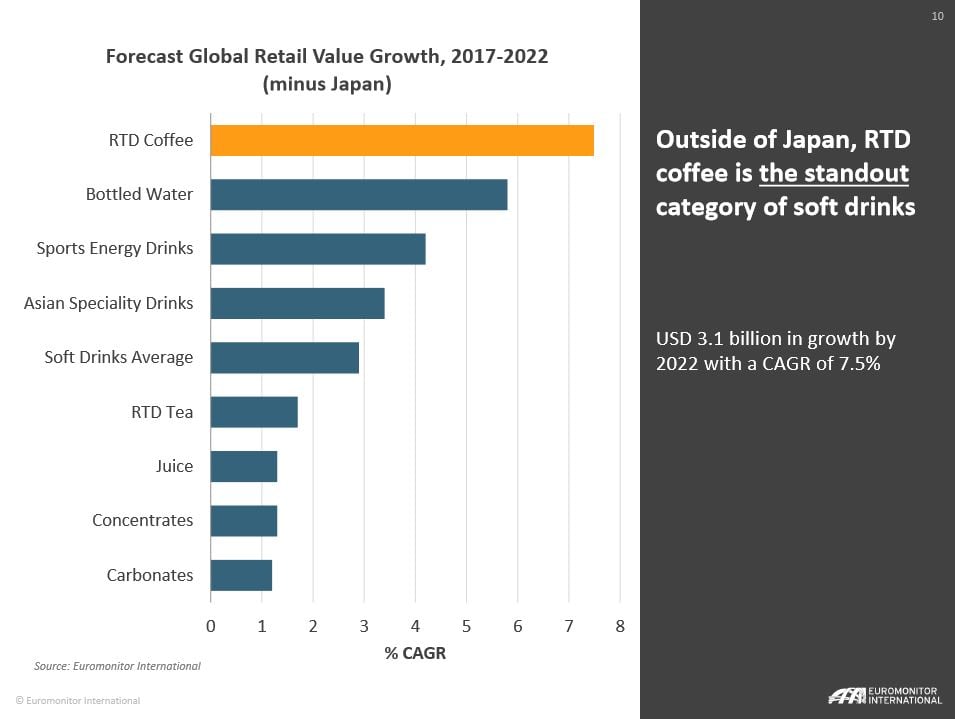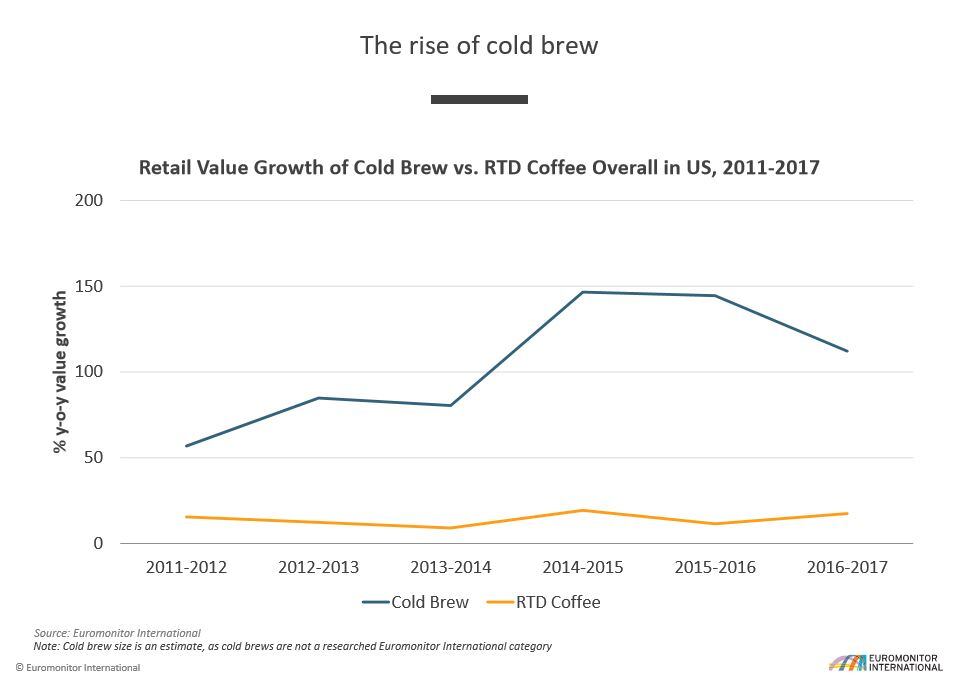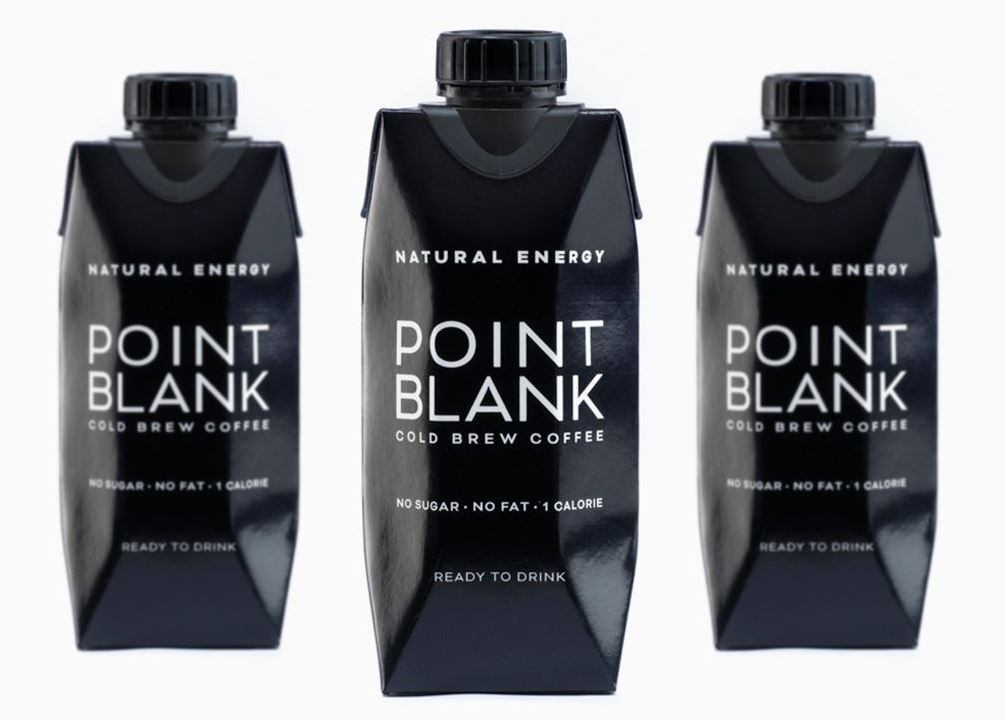Excluding the large but contracting Japanese market, RTD coffee will generate $3.1bn in growth by 2022 with a CAGR of 7.5%, well above projected growth for soft drinks and even bottled water, according to Euromonitor’s recent webinar on RTD coffee led by senior beverage analyst Matthew Barry.

“RTD coffee represents absolute gains to the category. It replaces an energy drink, a carbonated soft drink, which allows coffee to expand to new occasions which is both powering growth and really explains why there’s so much excitement in this category in North America,” Barry said.
Some of the largest drivers of the RTD coffee craze have been the decline of carbonated soft drinks paired with a growing 'coffee shop culture'. However, convenience and on-the-go lifestyles have also factored into RTD coffee’s popularity, added Barry.
“They’re not always able to spend a lot of time in a coffee shop luxuriously enjoying a hot cup of coffee,” he said.
Emerging brands have taken advantage of this shift in coffee consumption behavior. La Colombe, for example, got its start as a high-end coffeeshop chain but entered the RTD coffee category with a line of premium draft latte cans in a range of flavors meant to appeal to coffee shop goers.
As a result of its positioning, La Colombe captured 1% of the US RTD coffee category in its first year.
Large players still dominate playing field
Ten years ago, RTD coffee didn’t extend far beyond Starbucks’ bottled Frappuccino drinks (in partnership with PepsiCo), but now, investment has heated up from major beverage manufacturers.
PepsiCo has been linked to Starbucks' RTD coffee business for more than 20 years and is now a $2bn business.
“The Frappuccino is less dominant than it once was but it’s still the leading brand in American RTD coffee. Now we have situations where all three players in American beverages are involved,” Barry said.
Coca-Cola has its Dunkin and McCafé RTD coffee ranges available in conventional retail nationwide which have both performed well, according to Barry.
“There’s now Keurig Dr. Pepper, which has signaled its interested in the idea of cold coffee, taking coffee to new occasions throughout the day, which almost definitely means they’re looking at RTD coffee as a major area of interest,” Barry said.
Keurig Dr. Pepper formed a distribution partnership with Austin, Texas-based cold brew brand, High Brew, in 2016 and Barry feels there are similar deals and investments to come.
RTD coffee grows into functional occasions
RTD coffee was introduced to the market with an 'adult milkshake-like' indulgent positioning, then came the energy-positioned coffee-flavored drinks (e.g. Java Monster by Java Energy). Barry identified cold brew as the third phase of the RTD coffee.
The growth of the RTD coffee category, as a whole, pales in comparison to cold brew’s surge in sales and consumer demand (see graph below), Barry noted.

What’s the next directional stage of the category?
According to Barry, the next trend of RTD coffee is shaping up to be products with a clean, functional market positioning tapping into trends such as antioxidants, probiotics (with cold brew varieties),

niche diets, and providing a source of ‘clean energy’.
Point Blank cold brew coffee, for example, is positioning itself as pre- and post-workout drink with 65 mg of caffeine per package. While only sold in the UK market, Barry foresees other brands like Point Blank entering the US market touting similar messaging.
Additionally, consumers may start to see more coffee brands utilize coffee’s natural antioxidant content as part of its marketing, such as Hawaiian coffee brand Kona Red.
Coffee tapping into digestive healthy segments, such as JUS By Julie’s probiotic cold brew is another key trending area to tune into, according to Barry.
“Cold brew presents potential in the probiotic space that wasn’t there previously [with hot brewed coffee],” Barry said.
While rapid innovation in the RTD coffee space is taking place, Barry added that previous, more mainstream forms of RTD coffee are still experiencing market relevance.
“It’s not that one stage replaces previous stages as much as it is diversifying what RTD coffee can be.”
